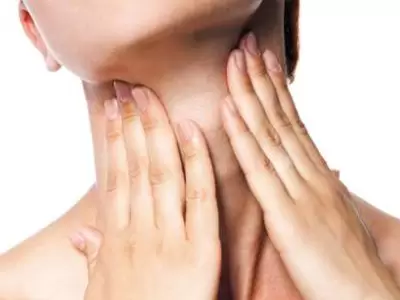Sialendoscopy
The procedure that involves imaging inside of the ducts of the salivary glands by using very small camera systems (endoscopes), through their openings in the mouth is referred as "Salivary gland endoscopy" or “Sialendoscopy”. With the help of small instruments inserted into the salivary glands ducts with endoscopes, it is possible to remove stones and tissue residues from the ducts, carry out medication or washing processes, or expand narrow areas in the ducts.
This procedure that has begun to be carried out at the end of the 1990s only to identify the cause of blockage, has in the course of time begun to be performed with curative purposes in diseases, in consequence of the development of thinner endoscopes as well as very thin surgical instruments that can be used together with such endoscopes.
Sialendoscopy is used mostly with intent to investigate the problems that lead to swelling and pain in the salivary glands. If the identified problem is the existence of stone or narrowness in the salivary duct, curative procedures can be carried out during the sialendoscopy, as well.
Sialendoscopy is today considered to be one of the most effective procedures for the diagnosis and treatment of benign diseases that cause blockage in the ducts of the submandibular (below the lower jaw) and parotid (in front of the ear) salivary glands; an in cases where there exist blockages preventing saliva flow. A success rate of up to 90% can be achieved with sialendoscopy alone.
Pathologies causing blockage in the salivary gland ducts are often salivary gland stones and less often salivary duct stenosis (narrowness) caused by various factors. Such disorders that in past periods could be treated with almost always surgical removal of the salivary glands can today be treated with the help of sialendoscopy, with high success rates and by protecting the salivary glands.
After sialendoscopic interventions that usually do not require hospitalization, patients can rapidly return to their normal diets and normal lives and the treatment process is completed with the shortest down-time possible.
Advantages of Sialendoscopy
Standard surgeries intended for submandibular (below the lower jaw) and parotid (in front of the ear) salivary glands have complications such as facial nerve paralysis, loss of sensation in the mouth, surgical scar on the neck and face, facial deformity, or recurrence of the disease due to incomplete removal of the salivary gland duct. With the sialendoscopy approach, protection can be provided against these complications, and additional benefits can be achieved.
The most important advantages of sialendoscopy over the standard surgical procedures can be listed as follows:
Rapid recovery
Very low rate of surgical complications
No risk of permanent nerve damage
No surgical scar on the skin
Protection of normal anatomy and functions
Minimal down-time
No need for hospitalization
In What Cases is Sialendoscopy Performed?
All patients diagnosed to have stones in their parotid and submandibular salivary glands or a constriction in the drain ducts of these glands and who have frequent salivary gland infection or swelling symptoms are a candidate for sialendoscopy intended for diagnosis or treatment.
Stones with a size of smaller than generally 3 mm in the parotid gland duct and 4 mm in the submandibular gland duct are caught during sialendoscopy, with the help of special forceps or stone-catching baskets and then they can be removed from the duct with no need to carry out any additional surgical procedure or with just a small incision made in the place where the ducts is open to the mouth.
For the removal of larger stones (6-8 mm), they need to be broken into sizes smaller enough to be removed from the duct, by means of mechanical tools, laser, or sound waves. Stones located in the salivary gland, which are considered as too big to remove from the duct, or as too big even for breaking processes, can be removed without damaging the salivary gland, with using endoscopic and surgical approaches in junction with each other.
In patients diagnosed to have narrowness in their salivary ducts, the narrow areas can be expanded using balloon catheters. In patients who frequently get inflammatory salivary gland disorder, endoscopic evaluation of the ducts, their cleaning, and their washing with solutions containing the antibiotic and cortisone can provide a significant decrease in the frequency of infections.






Comment
Your Contact Information will not be shared in any way. * Required Fields